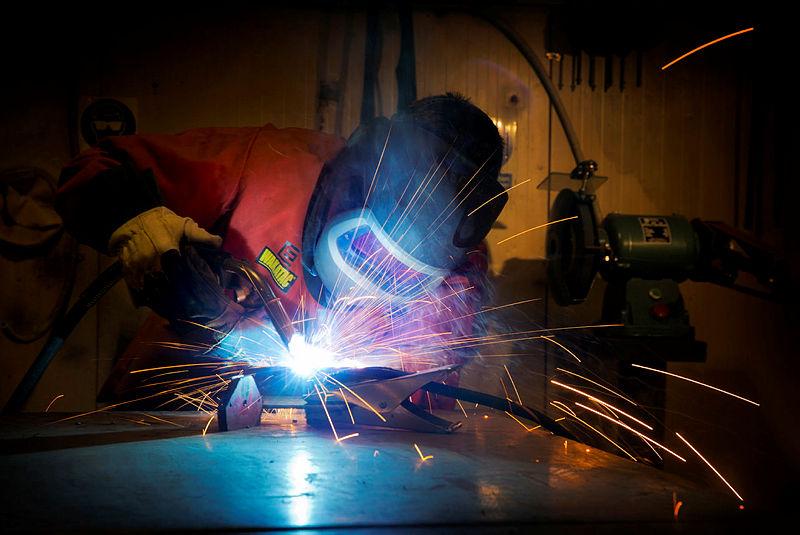Australia needs to get smarter about building its defence industry workforce
Posted By Rob Kremer on March 11, 2020 @ 12:30

Those of us who were in the defence sector in the late 2000s will remember the challenges that both the Department of Defence and the defence industry experienced in attracting and retaining workers in what was a busy project environment. If we think about it, we can probably identify projects that had the seeds of underperformance sowed in the inability of Defence and industry to get the highly skilled workforce they needed.
The strategic reform program of 2009 resulted in a sharp contraction in workforce numbers, which now has implications for our ability to scale up.
We’re embarking on the largest modernisation and recapitalisation of the Australian Defence Force since World War II, and the defence industry workforce will need to grow by 10–20% over the next five years to deliver on Defence’s integrated investment program.
The defence sector doesn’t operate in a vacuum, and adjacent industries such as construction, infrastructure and technology are strong competitors for the core skills the sector requires. Engineering, technology and project-management skills are already in short supply in most parts of Australia, and the workforce development air bubble of 2010–2015 means that there are concerns with the maturity and experience levels of mid-level practitioners and managers.
There’s no silver-bullet solution to the challenges we face, but there are two clear themes we must focus on to guide our thinking. First, we must make the most efficient use possible of the existing workforce, and second, we must increase the supply of workers. Failure to do both of these things will lead to undesirable project outcomes and destructive competition between employers.
The Australian worker is relatively immobile and is unlikely to move permanently between states for employment. That means we must take the work to the workers when possible. A distributed workforce model will face some operational and technology challenges, but non-traditional locations will open untapped workforce resources.
Employers, both government and industry, must look for the optimal mix of permanent employees and contingent labour. Achieving the right balance will ensure efficient allocation of labour while enabling organisations to focus on their core activities.
Defence employers must explore opportunities to partner, rather than duplicate each other’s workforces. Sharing workforces or intellectual property among primary defence contractors has been seen as impracticable in the past; however, they could explore subcontracting work packages to capable small and medium enterprises rather than trying to raise a new workforce themselves.
Employers must also have realistic expectations about what sort of workers they’ll get and set their sails accordingly. There are worrying signs of operational managers in the public and private sectors being slow to adapt in this respect, which will only compound the shortfall in the future.
The government’s defence industry skilling and STEM (science, technology, engineering and maths) initiative [1] is aiming to address the long-term supply of STEM-based skills. But the workforce shortage is being felt now, and we must be smart about how we develop and retain a capable workforce right now.
It’s clear to anyone who has tried to hire a software engineer with a security clearance lately that the cupboard is practically bare, and that we need to plan to hire people straight out of the education sector or from adjacent industries. This is also increasingly the case for the majority of the engineering, technology and management skill sets that the sector needs.
The challenge goes beyond just attracting people—the defence sector needs to attract people with a close alignment to its technical, procedural and cultural aspects. Failure to do so will lead us to attract the wrong type of worker—one who will not stay or, worse, one who will stay but fail to productively integrate. These risks aside, there’s a great opportunity for the sector to benefit from the broad range of experience and skills that workers from adjacent industries can bring.
New immigration visas are making it easier to bring in expertise from overseas, but it frustrates everyone when an experienced engineer from a Five Eyes nation ends up working in the rail sector because they’re ineligible for a security clearance and therefore can’t get work in defence. The ADF has a way to deal with this [2], and the government should consider whether a different approach is warranted given the defence industry’s status as a ‘fundamental input to capability’.
Avoiding the overclassification of work or facilities will help. Smart systems and organisational design can mean that time and infrastructure aren’t tied up unnecessarily, while providing faster access to workers without high-level security clearances.
Lastly, we must consider the cost of workforce expansion. Defence industry will spend around $20 million on talent-acquisition activities in 2020–21 alone. Defence industry salaries have been increasing since 2015, and we must budget for a level of increase that’s higher than inflation to be competitive with other industries. Flexible working arrangements and stimulating work are highly valued by the workforce and smart employers are leveraging their offerings to attract and retain staff.
The cost of upskilling workers from the education sector or adjacent industries must also be factored in. Risks here can be mitigated through careful recruitment and selection. Funding for such initiatives will pale in comparison to the costs of worker undersupply in the coming decade.
Australia has a once-in-a-generation opportunity to create a strong sovereign defence industry capability, while also growing a deeper capability in our education, technology and manufacturing industries that will provide the basis for prosperity and security in the future. To realise this opportunity, we must be smarter than we have ever needed to be in the past about how we plan for, organise and build our workforce.
Article printed from The Strategist: https://aspistrategist.ru
URL to article: /australia-needs-to-get-smarter-about-building-its-defence-industry-workforce/
URLs in this post:
[1] defence industry skilling and STEM (science, technology, engineering and maths) initiative: https://www.defence.gov.au/SPI/Industry/IndustrySkillingSupport.asp
[2] ADF has a way to deal with this: /recruiting-pacific-islanders-into-the-adf-requires-a-change-in-policy-not-law/
Click here to print.